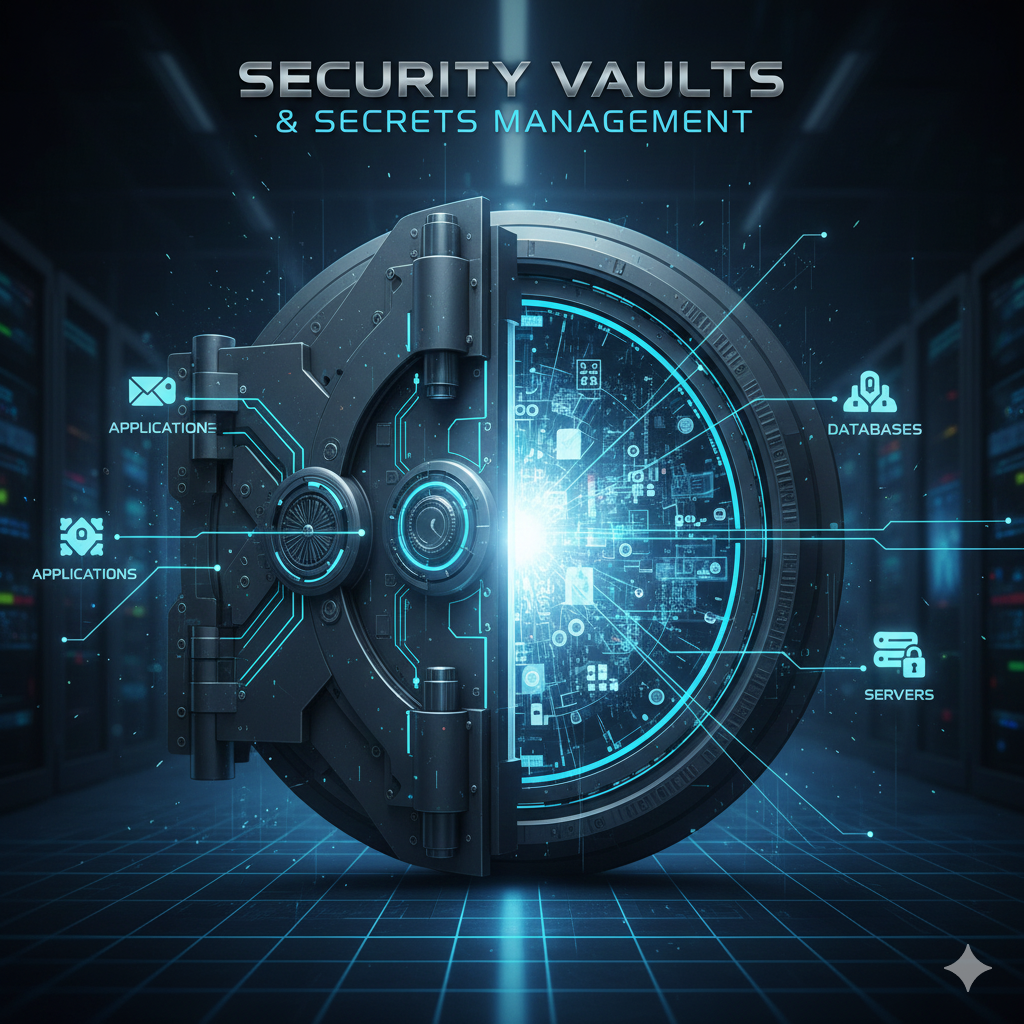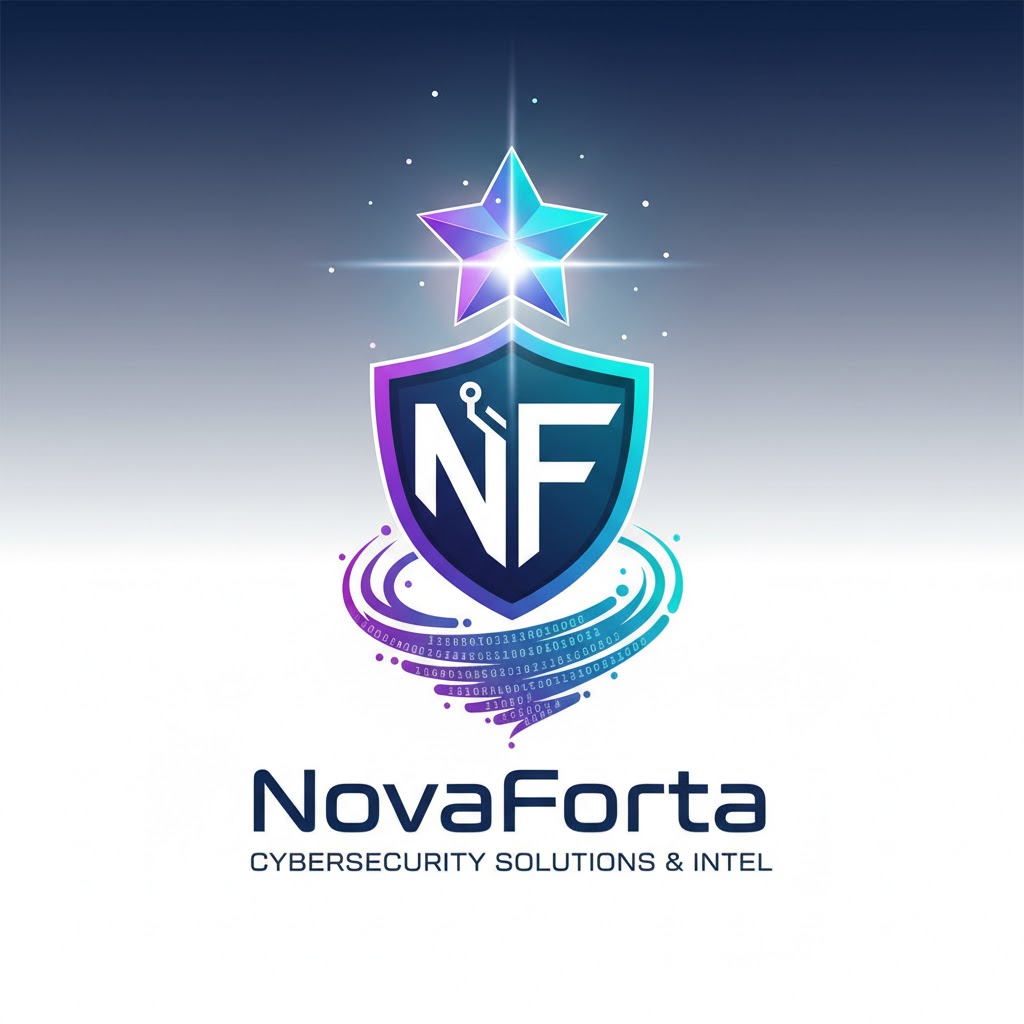🔐Security vaults (also known as secrets management systems) are secure repositories designed to store, manage, and control access to sensitive credentials like API keys, passwords, tokens, certificates, and encryption keys. They address the problem of secret sprawl—when secrets are scattered across code, files, environments—by centralizing storage, enforcing encryption, and providing controlled access. [hashicorp.com], [entro.security]
Core Features & Benefits
- Encrypted Secret Storage: Store credentials in an encrypted vault, shielding them from unauthorized access. [entro.security], [ninjaone.com]
- Access Control & Policies: Apply fine-grained authorization using ACLs, roles, and secrets lifecycle policies, ensuring the principle of least privilege. [opstree.com], [ninjaone.com]
- Dynamic Secrets: Generate ephemeral credentials (e.g., database usernames/passwords) with automatic expiration to reduce compromise risks. [opstree.com], [infisical.com]
- Automated Rotation: Schedule rotation of secrets regularly (e.g., every 60 days) to minimize exposure windows. [learn.microsoft.com], [sentinelone.com]
- Audit & Logging: Track all access events for compliance, investigation, and anomaly detection. [opstree.com], [ninjaone.com]
- Secret Injection: Automate secret distribution at runtime to eliminate hardcoding or human exposure. [infisical.com], [learn.microsoft.com]
Best Practices for Effective Secrets Management
From OWASP, HashiCorp, Microsoft, SentinelOne, and Infisical:
- Centralize & Standardize
Use one primary secrets platform and backup its root credentials in a secure secondary vault to prevent sprawl and inconsistencies. [hashicorp.com], [cheatsheet….owasp.org], [hashicorp.com] - Enable High Availability
Ensure the vault is fault-tolerant and responsive, especially during incident response. [cheatsheet….owasp.org] - Avoid Hardcoding
Never embed credentials in code or config files. Use environment variables or secret injection patterns instead. [learn.microsoft.com], [hashicorp.com] - Dynamic Credentials & Automatic Rotation
Replace long-lived secrets with dynamic, time-bound ones that expire and rotate automatically. [infisical.com], [learn.microsoft.com], [sentinelone.com] - Enforce Least Privilege
Grant applications and users only the minimal permissions necessary, strictly adhering to role-based and attribute-based access. [sentinelone.com], [ninjaone.com] - Comprehensive Audit Trails
Enable logging for all secret operations to support compliance requirements like GDPR, HIPAA, PCI DSS, SOC 2, NIS2, and DORA. [ninjaone.com], [sentinelone.com] - Monitor & Scan for Leaks
Implement automated scanning for secrets in code repositories and alert on any potential exposures. [infisical.com], [infisical.com]
Top Secrets Management Platforms in 2025
| Tool | Ideal For | Highlights |
|---|---|---|
| HashiCorp Vault | Enterprises with strong compliance needs, hybrid architectures | Centralized, dynamic secrets, encryption as a service, flexible auth, audit logs [doppler.com], [opstree.com], [strongdm.com], [sanj.dev] |
| AWS Secrets Manager | AWS-centric teams | Cloud-native auto-rotation, tight AWS integrations [doppler.com], [peerspot.com], [sanj.dev] |
| Azure Key Vault | Azure-first ecosystems | Supports secrets, keys, certificates; RBAC, HSM, Defender integration [doppler.com], [learn.microsoft.com], [peerspot.com], [sanj.dev] |
| Google Secret Manager | GCP-native applications | Simple secret storage with IAM-based access and logging [doppler.com], [geekflare.com] |
| Doppler | Developer-centric environments | API-driven UX, compliance tools, hybrid support [doppler.com] |
| Infisical | Open-source advocates | Self-hosted, extensive integrations, secret workflows and scanning [doppler.com], [infisical.com] |
| Akeyless | Multi-cloud & SaaS-first | Zero-knowledge architecture, unified control plane [doppler.com], [geekflare.com] |
| StrongDM | Vault-agnostic and secretless access | Brokers ephemeral credentials without exposing them [strongdm.com] |
Vault vs. Key Management: Understanding the Difference
- Vault (Secrets Manager): Handles a variety of secrets (passwords, certificates, API keys), offers secret rotation, secure retrieval, and audit logging.
- Key Management (e.g., AWS KMS, Azure Key Vault HSM): Focused on encryption keys, managing their lifecycle, cryptographic operations (encrypt/decrypt), and Secure Key Storage.
AWS KMS and Azure Key Vault offer both secret and key capabilities, but AWS Secrets Manager adds secret rotation and RDS integration, while Key Management Services focus on encryption. [stackshare.io], [peerspot.com], [spotsaas.com], [learn.microsoft.com]
Choosing the Right Solution
Consider:
- Environment: Cloud-native vs hybrid vs self-hosted.
- Compliance & Security Goals: FIPS, HSM, SOC standards.
- Operational Readiness: Self-hosting requires more maintenance vs. leveraging managed services.
- Development Workflow: Evaluate automation, secret injection, developer experience.
A typical pattern:
- Vault (HashiCorp) for multi-cloud, enterprise-grade requirements.
- Cloud-native options (AWS, Azure, GCP) for simpler, integrated use cases.
- Developer-first tools (Doppler, Infisical) for ease and agility.
- Zero-trust or secretless access (StrongDM) to eliminate exposure entirely.
Conclusion
Security vaults and secrets management systems are fundamental for modern cybersecurity. They enforce secure secret handling through encryption, granular access control, rotation, and auditing—critical to preventing breaches and meeting compliance standards. Choosing a system depends on your infrastructure (cloud vs hybrid), regulatory landscape, and team workflows. Implementing one of these solutions—along with best practices—will greatly enhance your organization’s security posture.



